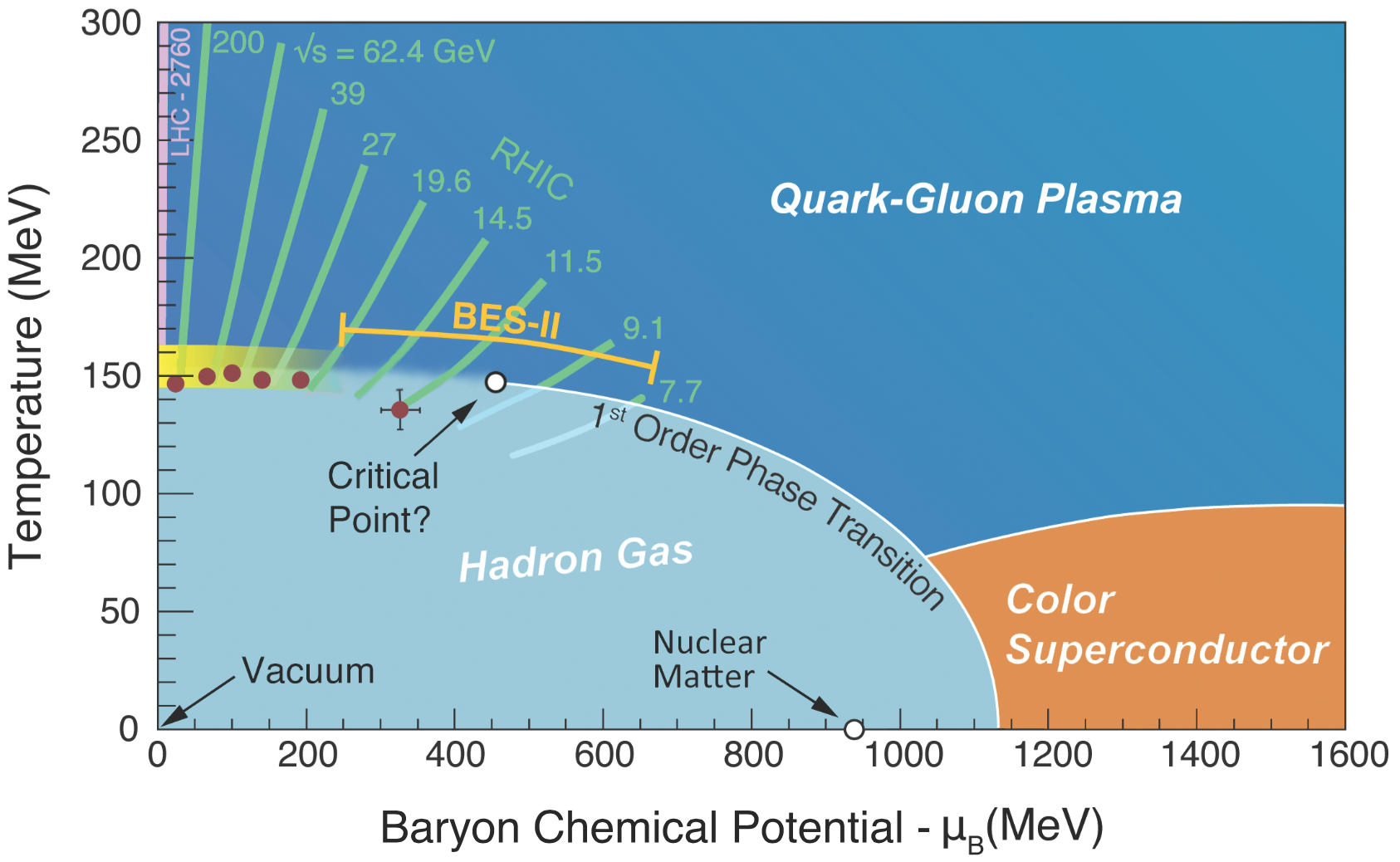Now on DEIXIS online: Early-universe Soup

At the dawn of the universe – just after the Big Bang – all matter was in the form of a hot-flowing soup called quark-gluon plasma, or QGP. Though a few ambitious, atom-smashing experiments have produced transient samples of this extreme phase of matter, researchers still have much to learn about its fundamental behavior.
Experimental physicists have tried to produce quark-gluon plasma since the 1980s and first reported observing it in 2000. Over the past 45 years, theorists have outlined the equations that govern QGP and many have combined theory and experiment to describe it.
Large-scale computations have been critical to the theoretical study of QGP’s novel characteristics. As part of a theoretical effort funded by the Department of Energy, Brookhaven National Laboratory’s Swagato Mukherjee and his colleagues are using an allotment of 167 million processor hours from the ASCR Leadership Computing Challenge (ALCC) to better understand QGP. Their findings will help physicists plan the next wave of experiments. “Neither theory nor experiment can do this alone,” Mukherjee says.
At the heart of every atom lies the nucleus, a super-tight ball of subatomic protons and neutrons. Those particles are made of even smaller parts, including quarks, which comprise just one thousandth of the mass. Gluons, the adhesive particles that hold quarks together, carry the strong interaction, a fundamental physical force that binds the atomic nucleus and generates the other 99.9 percent of all matter’s mass.
But at temperature extremes 70,000 times hotter than the center of the sun, even tightly packed quarks and gluons begin to flow. The transition to the flowing state is much like phase changes in matter such as water. Water exists as liquid, steam or ice, based on how much heat and pressure are applied. Scientists long ago carefully mapped the underlying conditions and boundaries between water’s different forms as a phase diagram, information that’s been critical for understanding water’s behavior. If researchers can understand how changes in temperature and density affect QGP, physicists can create a similar roadmap documenting conditions that form it.
Because of the extreme conditions required for QGP creation, the only way to observe it on Earth is to bombard matter with high-energy particles at either the Relativistic Heavy Ion Collider (RHIC) at Brookhaven or the Large Hadron Collider at CERN in Switzerland.
Experiments aren’t the only way to study QGP’s properties. Physicists have worked out the theory of how quarks and gluons interact, known as quantum chromodynamics, or QCD.
However, the complexity of these interactions, with billions of variables, requires sophisticated parallel computing resources to solve, Mukherjee says.
Using their ALCC allotment, Mukherjee and his colleagues have concentrated on a version of this theory, lattice QCD, to computationally study the plasma on Titan, a Cray XK7 at Oak Ridge National Laboratory. Initially, the researchers omitted the density component and solely calculated how increasing heat eventually produces the flowing QGP. Now they’ll need to consider the density component as well. With their ongoing ALCC allotment, they’re simulating how increasing density changes the phase diagram and eventually the plasma’s behavior.
Read more at DEIXIS: Computational Science at the National Laboratories, the online companion to the DOE CSGF’s annual print journal.
Image caption: An experimental and theoretical exploration of the quantum chromodynamics (QCD) phase diagram. (Click to enlarge.) The matter produced in collisions at the highest energies and the smallest baryon chemical potentials can change from quark-gluon plasma (QGP) to a hadron gas through a smooth crossover. But lower energy collisions can access higher baryon chemical potentials where a first-order phase transition line is thought to exist. The reach of the future DOE Basic Energy Sciences program at RHIC is shown, as are the trajectories on the phase diagram followed by the cooling droplets of QGP produced in collisions with varying energy. The present reach of lattice QCD calculations is illustrated by the yellow band. (Image: Swagato Mukherjee, Brookhaven National Laboratory.)


